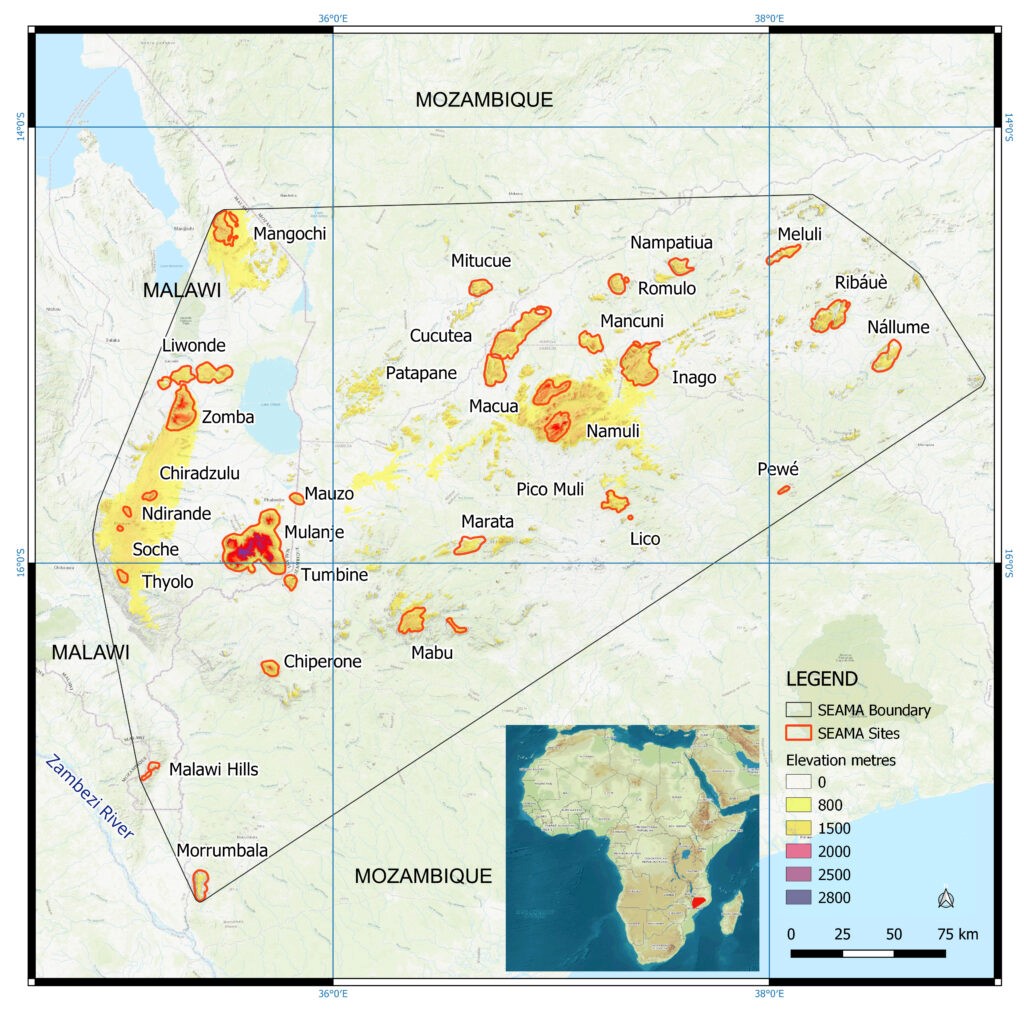Free Courses Sale ends Soon, Get It Now


Free Courses Sale ends Soon, Get It Now



Disclaimer: Copyright infringement not intended.
Context:
Recent biological surveys of ancient inselbergs in southern Malawi and northern Mozambique have led to the discovery and description of many species new to science, and overlapping centres of endemism across multiple taxa.
Details:
South East Africa Montane Archipelago’ (SEAMA)
A threatened ecoregion
Survey regions
Findings
Ecological regions
|
Inselberg An inselberg is one of the landforms resulting from erosional processes. For an inselberg to form, there has to be pronounced variations in the level of weathering of the land surface. Inselbergs arise from rocks which erode at a slower rate than that of the surrounding rocks. The landform consists of an erosion-resistant rock which protects a softer rock such as limestone. The resistant rock remains isolated as ongoing erosion erodes the less resistant rock around it. Volcanic processes are responsible for the rising of the resistant rock above the surrounding area. The resistant rock is able to resist erosion due to its tight joints. Once formed, inselbergs appear steep sided. Over time, inselbergs may be destroyed through the marginal collapse of exfoliation sheets and joint blocks. A massive inselberg is referred to as a bornhardt which manifests as dome-topped, bare, and steep-sided. |
Conclusion
These findings prompted further surveys of other mountains in the region and resulted in new species descriptions, including many from Mount Mabu, which is now recognised to be the most extensive mid-elevation rainforest in southern Africa.
|
PRACTICE QUESTIONS What are the main threats to biodiversity across the world? How can the concept of biodiversity hotspots help in conserving the rich and diverse flora and fauna of the country? (250 words) |
© 2024 iasgyan. All right reserved